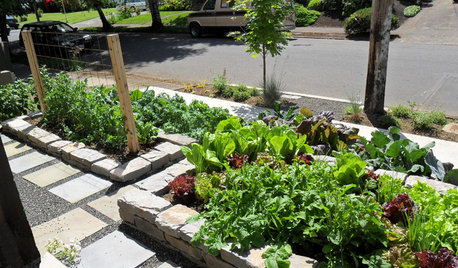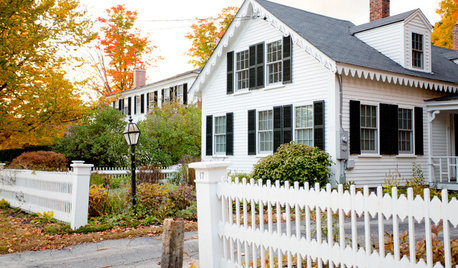Restoring fertility of yard after housefire
davelew
16 years ago
Related Stories

BEFORE AND AFTERSSee 6 Yards Transformed by Losing Their Lawns
Wondering whether a turf lawn is the best use of your outdoor space? These homeowners did, and they found creative alternatives
Full Story
FRONT YARD IDEASWelcome Edibles Into the Front Yard for Fresh Food and More
Give your front yard design a boost and maybe even make new friends by growing fruits and vegetables
Full Story
LANDSCAPE DESIGN15 Great Ideas for a Lawn-Free Yard
End the turf war for good with hardscaping, native grasses and ground covers that save water and are easier to maintain
Full Story
INSPIRING GARDENSNative Plants Bring 10 Southern California Front-Yard Gardens to Life
Rare plants, rain gardens and wildlife habitats are just a few of the features showcased on the 2016 Theodore Payne Native Plant Garden Tour
Full Story
FARM YOUR YARDHow to Get Good Soil for Your Edible Garden
The nutrients in your soil feed the plants that feed you. Here are tips on getting it right — just in time for planting season
Full Story
GARDENING GUIDESHow to Fix Bare and Yellow Lawn Spots
Restore your turf’s good looks by reseeding unsightly patches
Full Story
FARM YOUR YARDHouzz Call: Show Us Your One-of-a-Kind Chicken Coops
Do you have a fun or stylish backyard shelter for your feathered friends? Post your pictures and stories in the Comments!
Full Story
HOUZZ TOURSMy Houzz: Peek Inside an Artist’s Updated Shotgun Home and Studio
Gorgeous art and elegant style befit this New Orleans live-work property
Full Story
LANDSCAPE DESIGNEasy Ways to Manage Stormwater for Lower Bills and a Healthier Earth
Send cleaner runoff into local waterways and spend less on yard irrigation with these simple landscaping approaches
Full Story
MONTHLY HOME CHECKLISTSTo-Dos: Your November Home Checklist
Winterize your home and yard, and make a game plan for the holidays
Full Story






bpgreen
bpgreen
Related Professionals
Ballenger Creek Landscape Architects & Landscape Designers · Beachwood Landscape Architects & Landscape Designers · Graham Landscape Architects & Landscape Designers · Kapaa Landscape Architects & Landscape Designers · Dunwoody Landscape Contractors · Mendota Heights Landscape Contractors · Middleton Landscape Contractors · Ronkonkoma Landscape Contractors · Oxon Hill Landscape Contractors · Chicago Decks, Patios & Outdoor Enclosures · Jeffersonville Decks, Patios & Outdoor Enclosures · Pittsburgh Decks, Patios & Outdoor Enclosures · Salisbury Decks, Patios & Outdoor Enclosures · Watauga Decks, Patios & Outdoor Enclosures · West Palm Beach Decks, Patios & Outdoor EnclosuresKimmsr
diggity_ma